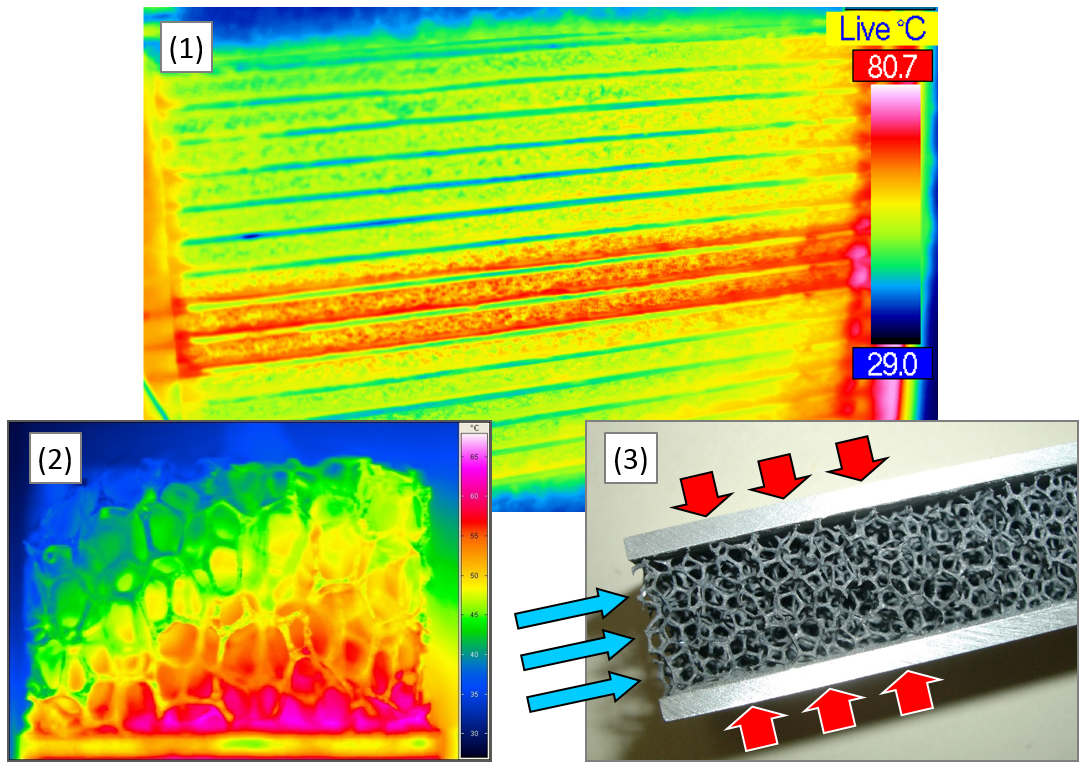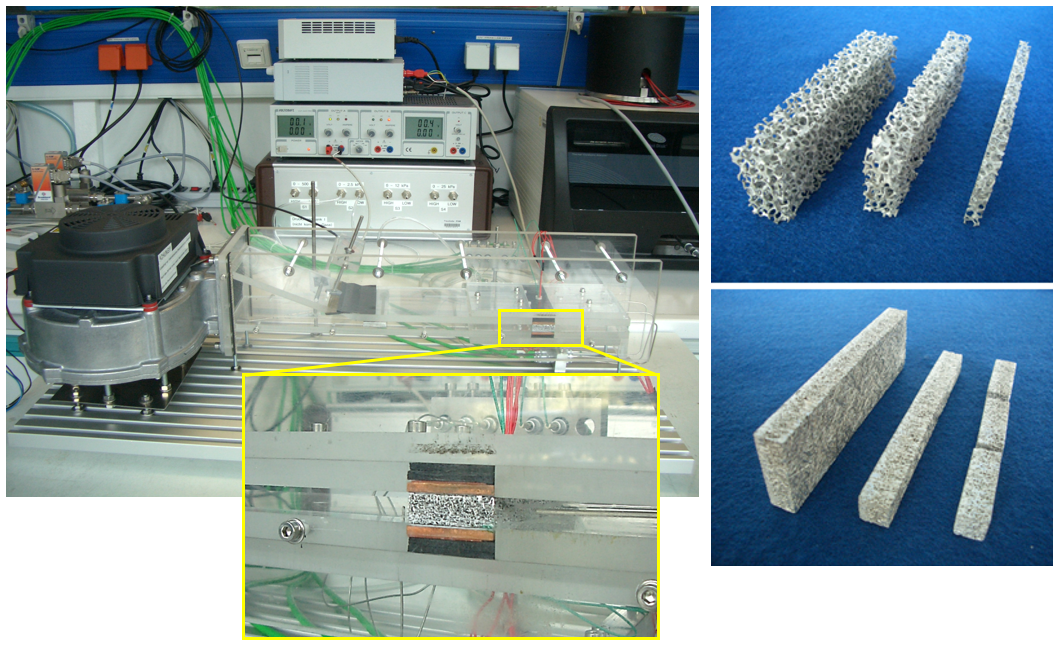Motivation and Business Activities
![(1) Aluminum fiber structures (70 % porous), (2) Highly porous aluminum foam, (3) 3D metal wire sandwich of copper, (4) Nickel foam on an evaporator test specimen, (5) Screen-printed microcooler [(3) & (4) not manufactured at Fraunhofer IFAM Dresden]. (1) Aluminum fiber structures (70 % porous), (2) Highly porous aluminum foam, (3) 3D metal wire sandwich of copper, (4) Nickel foam on an evaporator test specimen, (5) Screen-printed microcooler [(3) & (4) not manufactured at Fraunhofer IFAM Dresden].](/en/Aboutus/Locations/Dresden/Energy_and_thermal_management/compact-heat-exchangers/jcr:content/contentPar/sectioncomponent/sectionParsys/textwithinlinedimage/imageComponent1/image.img.png/1596455961820/Kompakte-Waermeuebertrager-Bild-1.png)
Heat exchangers are components that transfer heat from a heat source to a heat sink. Both can be a fluid (cooling/heating medium), but often the heat source is a component to be cooled. Compact heat exchangers are required if large amounts of heat per surface area are to be transferred.
Both the powder metallurgically based materials developed at Fraunhofer IFAM Dresden and additive manufacturing processes offer ideal possibilities for the design of efficient compact heat exchangers:
• use of cellular metals for heat exchangers with gaseous media (open cell metals),
• structured evaporator surfaces based on powder metallurgical processes,
• Production of microcoolers or heat pipes through additive manufacturing processes (e.g. cooling of electronic components).
We offer you first-hand service: analysis of heat transportation, thermal simulation and material selection, prototype production of compact heat exchangers and experimental validation in our thermo-technical laboratory.
 Fraunhofer Institute for Manufacturing Technology and Advanced Materials IFAM
Fraunhofer Institute for Manufacturing Technology and Advanced Materials IFAM
